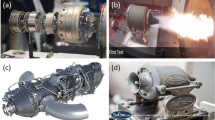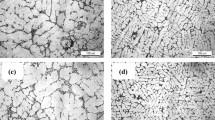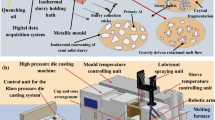Abstract
The second generation DS alloy, CM186LC is used in the as-cast and double aged condition which has creep-rupture properities equivalent to the first generation single crystal alloys CMSX-2 and CMSX-3. In production, cast vane components have to be subjected to a brazing treatment for joining into pairs. The effect of the brazing treatment and modified brazing treatment (heat treatment) on mechanical properities at high temperature was studied in accordance with microstructure. Brazing treatments gave no effect on tensile properities and creep failure mode of DS CM186LC, although a small decrease in stress-rupture life was observed. Creep failure was related to the solidified microstructure. Creep cracks began at the grain boundary normal to the applied stress, especially at the γ/γ’ eutectic phase on grain boundaries. Most of γ/γ’ eutectics which had solidified at the last stage of casting, had microporosity which became a crack initiation site during creep. MC carbide reaction with the matrix γ was observed in the creep failed specimens.
Similar content being viewed by others
References
D. Driver, D. W. Hall and G. W. Meetham,The development of Gas turbine Materials (ed., G. W. Meetham), p. 2, Applied Science Pub., London (1981).
F. Caruel, S. Bourgugnon, B. Lallement, S. Fageas, A. DeBussac, K. Harris, G. L. Erickson and J. B. Wahl, inTurbo Expo ’96, p. 10, NEC, Birmingham (1996).
K. Harris, G. L. Erickson. S. L. Sikkenga, W. D. Brentnall, J. M. Aurrecoechea and K. G. Kubarych, inSuperalloys 1992 (eds., S. D. Antolovichet al.), p. 297, TMS, Warrendale, PA (1992).
D. N. Duhl, inThe Superalloys II (eds., C. T. Sims, N. S. Stoloff and W. C. Hagel), p. 200; p. 206; p. 208, John Wiley & Sons, New York (1986).
H. Birmann, M. Strhler and H. Mughrabi,Metall. Trans. A27, 1003 (1996).
C. Y. Jo, S. M. Seo, D. H. Kim, S. J. Choe, N. Jones and D. Knowles,J. Kor. Inst. Met. & Mater. 36, 1408 (1998).
S. H. Ai, V. Lupinc and M. Maldini, inProc. of High Temperature Materials for Power Generation Engineering 1990 (eds., E. Bacheletet al.), p. 1027, Kluwer Academic Pub., Dordrechet (1990).
M. Maldini, M. Marchionni, M. Nazmy, M. Staubli and G. Osinkolu, inSuperalloys 1996 (eds., R. D. Kissingeret al.), p. 327, TMS. Warrendale, PA (1996).
R. Chieragatti and L. Remy,Mater. Sci. Eng. A41, 1 (1991).
M. Mclean,Directionally Solidified Materials for High Temperature Service, p. 20, The Metal Society, London (1983).
W. H. Chang, inSuperalloys Processing, Sec. V., MCIC-72-10 (1972).
E. W. Ross and C. T. Sims, inThe Superalloys II (eds., C. T. Sims, N. S. Stoloff and W. C. Hagel), p. 122, John Wiley & Sons, New York (1986).
Author information
Authors and Affiliations
Rights and permissions
About this article
Cite this article
Jo, CY., Jones, N., Choe, SJ. et al. High temperature mechanical properities and creep crack initiation of DS CM186LC for nozzle guide vane. Metals and Materials 4, 1017–1025 (1998). https://doi.org/10.1007/BF03025971
Issue Date:
DOI: https://doi.org/10.1007/BF03025971




